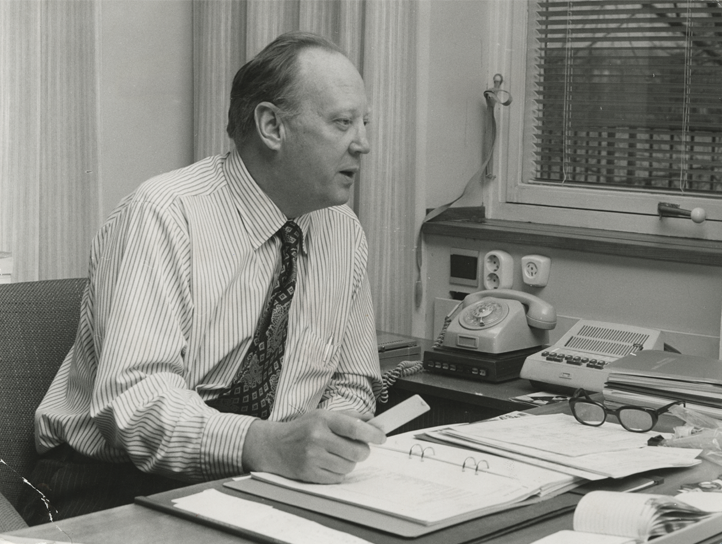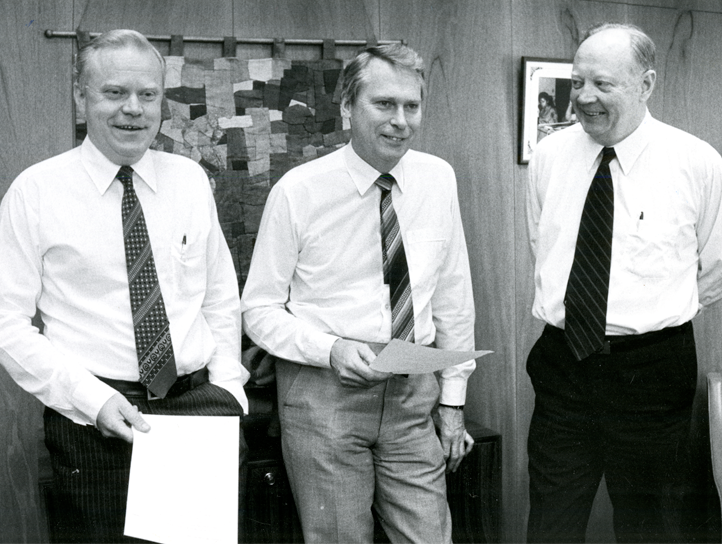Ericsson’s then vice president Hans Werthén assumed the leadership of Electrolux in 1967. Werthén saw that Electrolux had somewhat shaky finances and needed to get better economies-of scale. It also needed to cut costs.

Electrolux CEO Hans Werthén at his desk
In Hans Werthén’s opinion, Electrolux was too small compared to its competitors but too big to stick to a limited niche. The company needed to become much larger in order to compete. During this period, the white goods industry in Europe was very fragmented with many struggling companies. Restructuring was a necessity.
Werthén’s strategy was to grow through acquisitions and diversification. In 1968, Electrolux sold its 38 percent share of Electrolux Corporation in the US to Consolidated Foods for SEK 300 million. This provided capital to start to implement the new strategy. Werthén began to acquire competitors in the Nordics, among them Swedish Husqvarna in 1977, which also led the Group into chainsaws and garden equipment.
In 1980 Electrolux acquired the Swedish Gränges Group, with mines, steel mills and manufactures of car safety belts and more, in a move to get a stronger balance sheet for further acquisitions.
The company made yet another major acquisition in 1984: Italy’s Zanussi. This purchase gave Electrolux a leading position in the European market for white goods and in food-service equipment, which had become increasingly important for the Group.
With the acquisition of White Consolidated Industries in 1986, Electrolux made a serious advance into the American market. This was the home of strong white-goods brands such as Frigidaire, Westinghouse and Kelvinator.

Anders Scharp, Gösta Bystedt and Hans Werthén, aka the “troika”
Werthén formed the so called “troika”, a team consisting of himself, Gösta Bystedt and Anders Scharp. All three became instrumental in driving the strategy as CEOs.
From 1967 to 1991, the troika managed more than 200 acquisitions. They increased Electrolux sales eighty-fold and its profits even more. In 1989 the company had 153,000 employees. Despite aggressive diversification, vacuum cleaners and white goods still accounted for two-thirds of Electrolux sales. The remainder was spread equally across office equipment, industrial products and the rapidly expanding commercial cleaning and service operations.
Electrolux had now become a diversified multinational company with a world-leading position in several areas. The internationalization of the Group’s operations was reflected in its foreign sales figures, which rose from two-thirds to three-quarters of total sales over the course of the 1980s.

